The AMD Ryzen 3 1300X and Ryzen 3 1200 CPU Review: Zen on a Budget
by Ian Cutress on July 27, 2017 9:30 AM EST- Posted in
- CPUs
- AMD
- Zen
- Ryzen
- Ryzen 3
- Ryzen 3 1300X
- Ryzen 3 1200
Ashes of the Singularity: Escalation
Seen as the holy child of DirectX12, Ashes of the Singularity (AoTS, or just Ashes) has been the first title to actively go explore as many of DirectX12s features as it possibly can. Stardock, the developer behind the Nitrous engine which powers the game, has ensured that the real-time strategy title takes advantage of multiple cores and multiple graphics cards, in as many configurations as possible.
As a real-time strategy title, Ashes is all about responsiveness during both wide open shots but also concentrated battles. With DirectX12 at the helm, the ability to implement more draw calls per second allows the engine to work with substantial unit depth and effects that other RTS titles had to rely on combined draw calls to achieve, making some combined unit structures ultimately very rigid.
Stardock clearly understand the importance of an in-game benchmark, ensuring that such a tool was available and capable from day one, especially with all the additional DX12 features used and being able to characterize how they affected the title for the developer was important. The in-game benchmark performs a four minute fixed seed battle environment with a variety of shots, and outputs a vast amount of data to analyze.
For our benchmark, we run a fixed v2.11 version of the game due to some peculiarities of the splash screen added after the merger with the standalone Escalation expansion, and have an automated tool to call the benchmark on the command line. (Prior to v2.11, the benchmark also supported 8K/16K testing, however v2.11 has odd behavior which nukes this.)
At both 1920x1080 and 4K resolutions, we run the same settings. Ashes has dropdown options for MSAA, Light Quality, Object Quality, Shading Samples, Shadow Quality, Textures, and separate options for the terrain. There are several presents, from Very Low to Extreme: we run our benchmarks at Extreme settings, and take the frame-time output for our average, percentile, and time under analysis.
For all our results, we show the average frame rate at 1080p first. Mouse over the other graphs underneath to see 99th percentile frame rates and 'Time Under' graphs, as well as results for other resolutions. All of our benchmark results can also be found in our benchmark engine, Bench.
MSI GTX 1080 Gaming 8G Performance
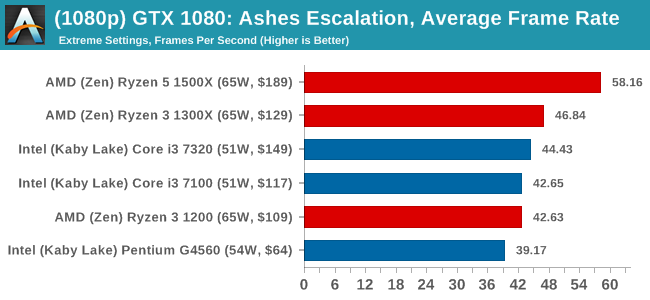
1080p

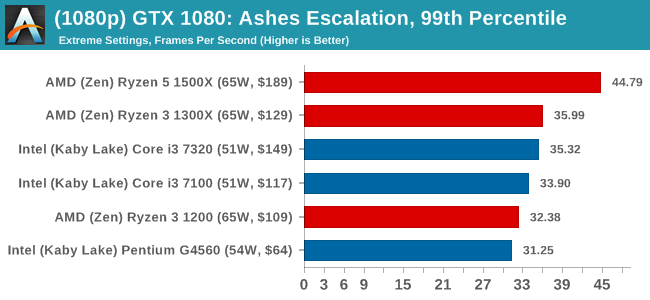
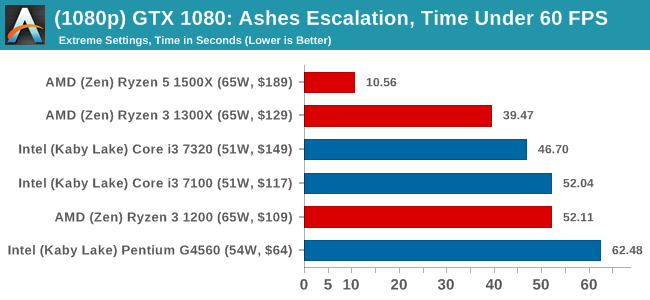
4K
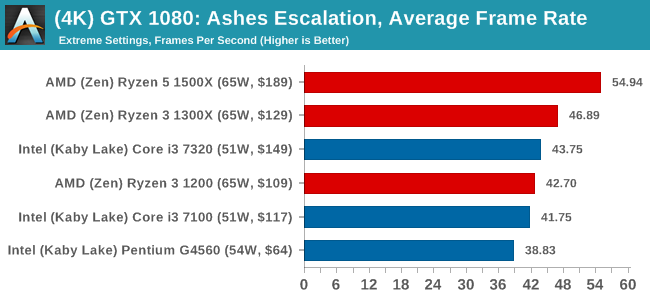
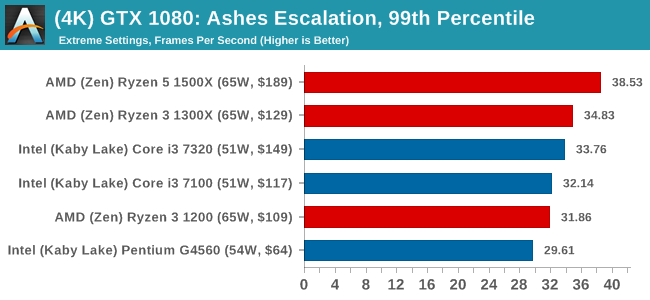
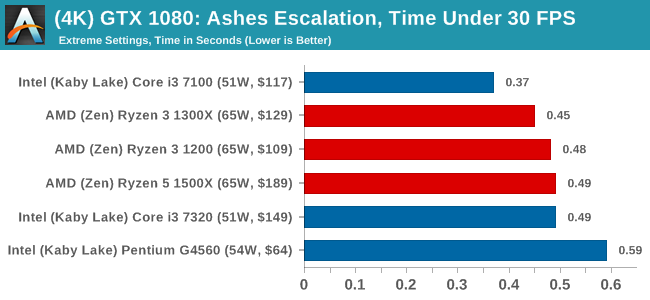
ASUS GTX 1060 Strix 6GB Performance
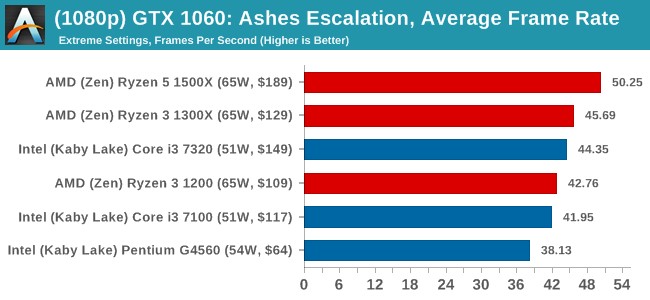
1080p

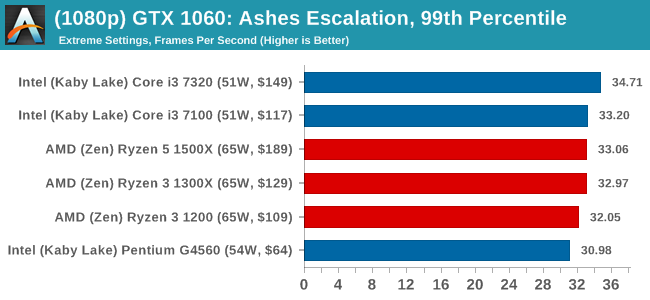
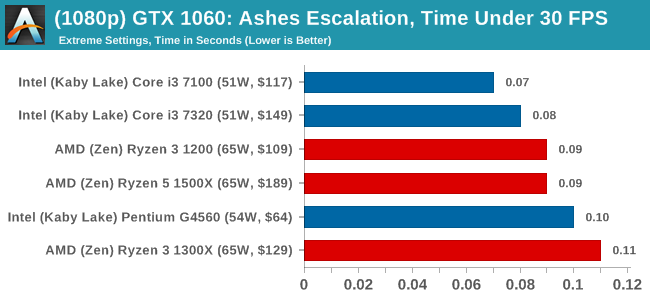
4K
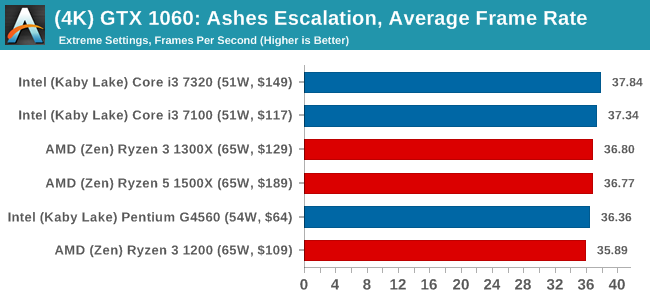
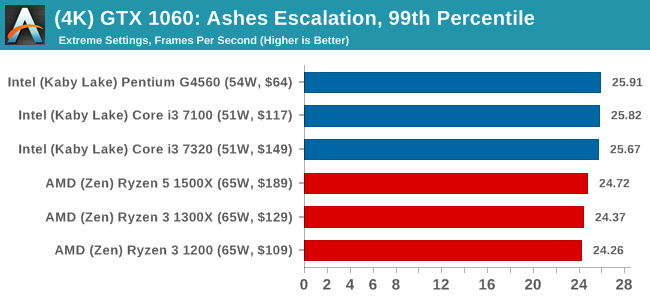
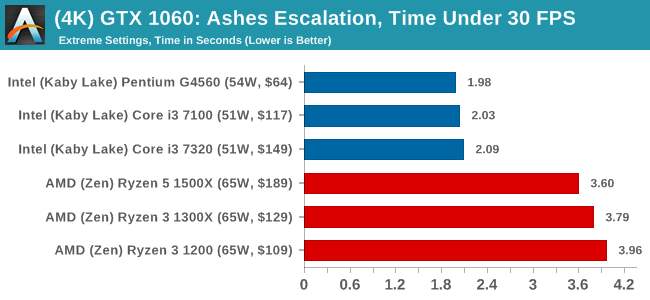
Sapphire R9 Fury 4GB Performance
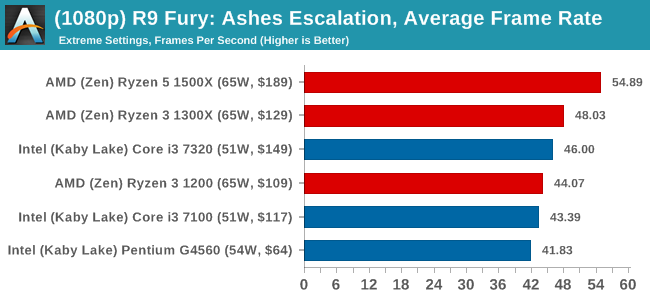
1080p

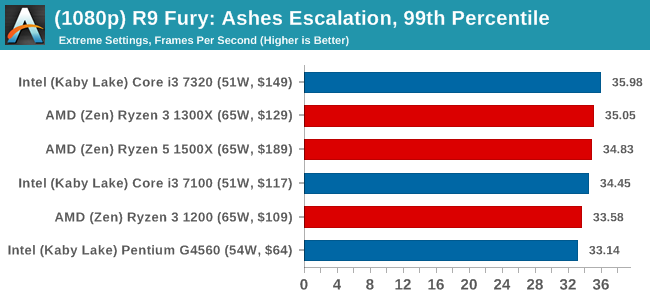
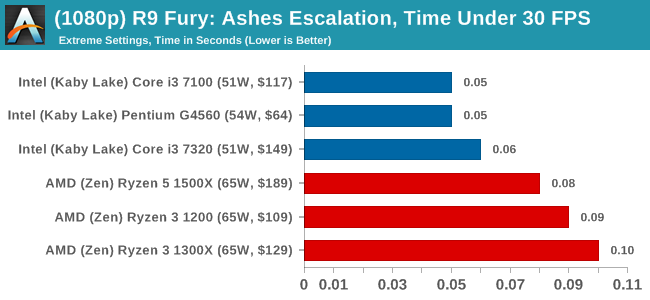
4K


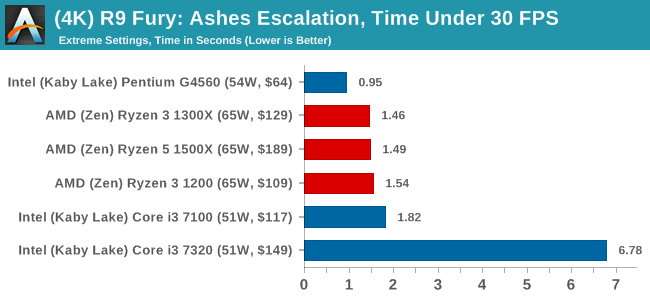
Sapphire RX 480 8GB Performance
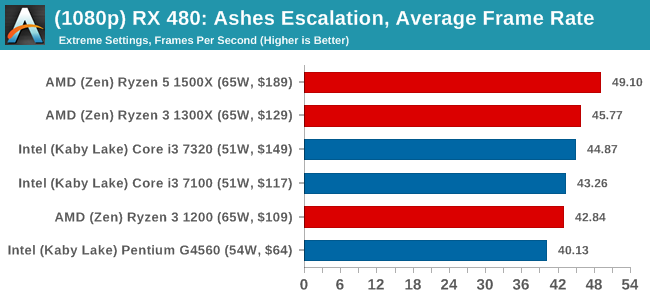
1080p

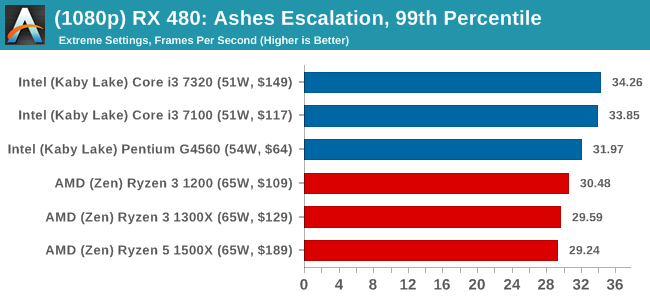
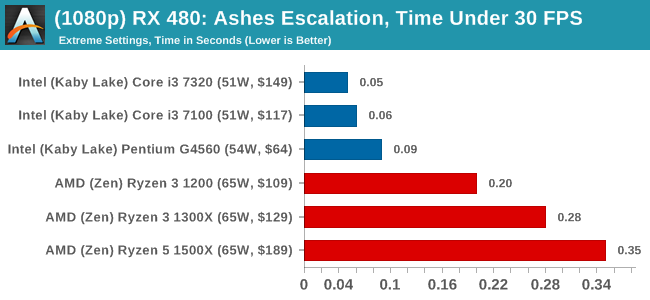
4K
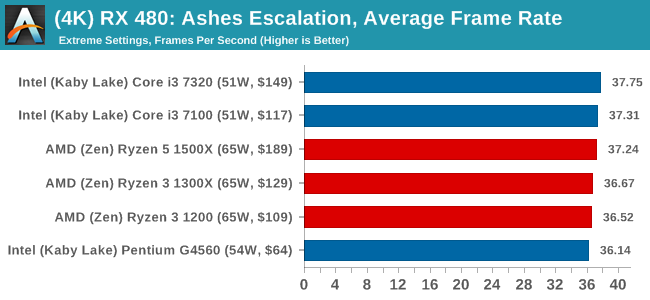
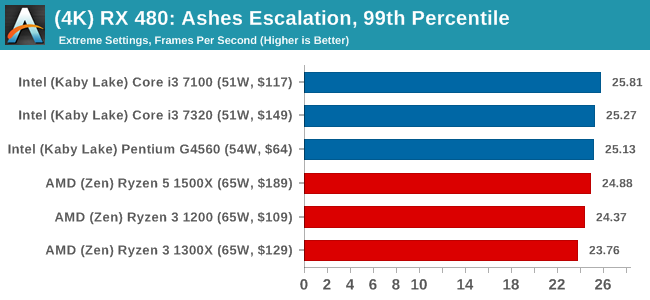













140 Comments
View All Comments
MajGenRelativity - Thursday, July 27, 2017 - link
You make a couple good points. Ryzen 3 is definitely on my watchlistiwod - Thursday, July 27, 2017 - link
What are the Power Load for each CPU and not whole system? Zen is more SoC like and harder to compare to Intel.Ian Cutress - Thursday, July 27, 2017 - link
System is variable. CPU numbers in a CPU review.ampmam - Thursday, July 27, 2017 - link
Great review but biased conclusion. Any idiot can sense it.MrCommunistGen - Thursday, July 27, 2017 - link
For us idiots, can you possibly elaborate what bias you're seeing?vMax65 - Thursday, July 27, 2017 - link
ampmam, good to know you are an idiot...Great review Ian.Ian Cutress - Thursday, July 27, 2017 - link
Biased in what way? I've been called an Intel shill and an AMD shill this week, will be glad to listen to what you think.Oxford Guy - Thursday, July 27, 2017 - link
Then don't open yourself up for these accusations by doing things like kneecapping Zen with 2400 speed RAM.If you think 2400 speed RAM is more beneficial than not then, at least, show the best case results for 3200 speed RAM and say "See — it's not important"
It's not good to see the same site that overclocking by telling people testing for serious stability isn't important and which pumps unwise levels of voltage in hobbling the RAM that's used to test Zen, a platform that most everyone knows benefits more from faster RAM than Intel does.
silverblue - Friday, July 28, 2017 - link
Perhaps it does, but it's not massive. Also, Ian did say he would test at faster settings at a later date.RAM prices are quite high at the moment for the higher clocked parts, which brings about an interesting observation - the Ryzen 3 is the cheapest part of this entire setup.
Oxford Guy - Saturday, July 29, 2017 - link
The RAM that he used was rated at 3000 and he chose to downclock it.